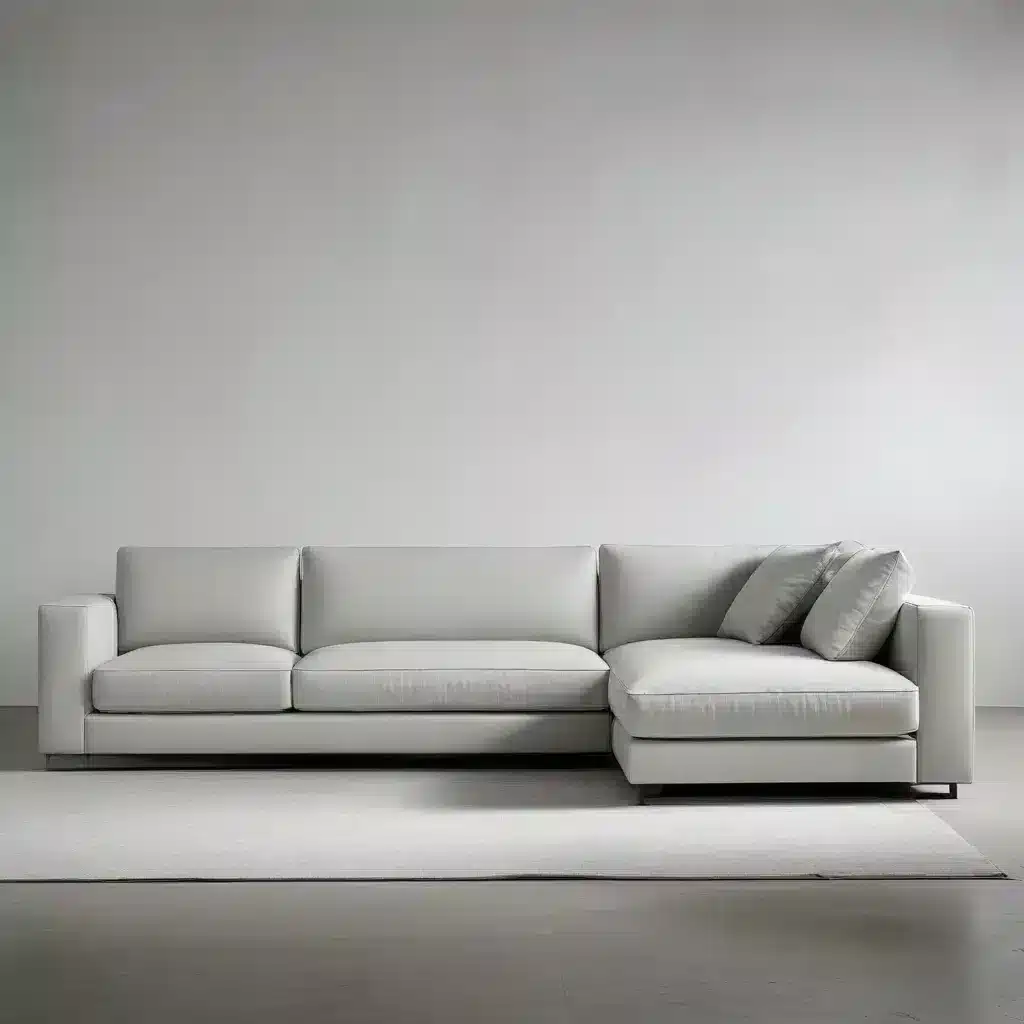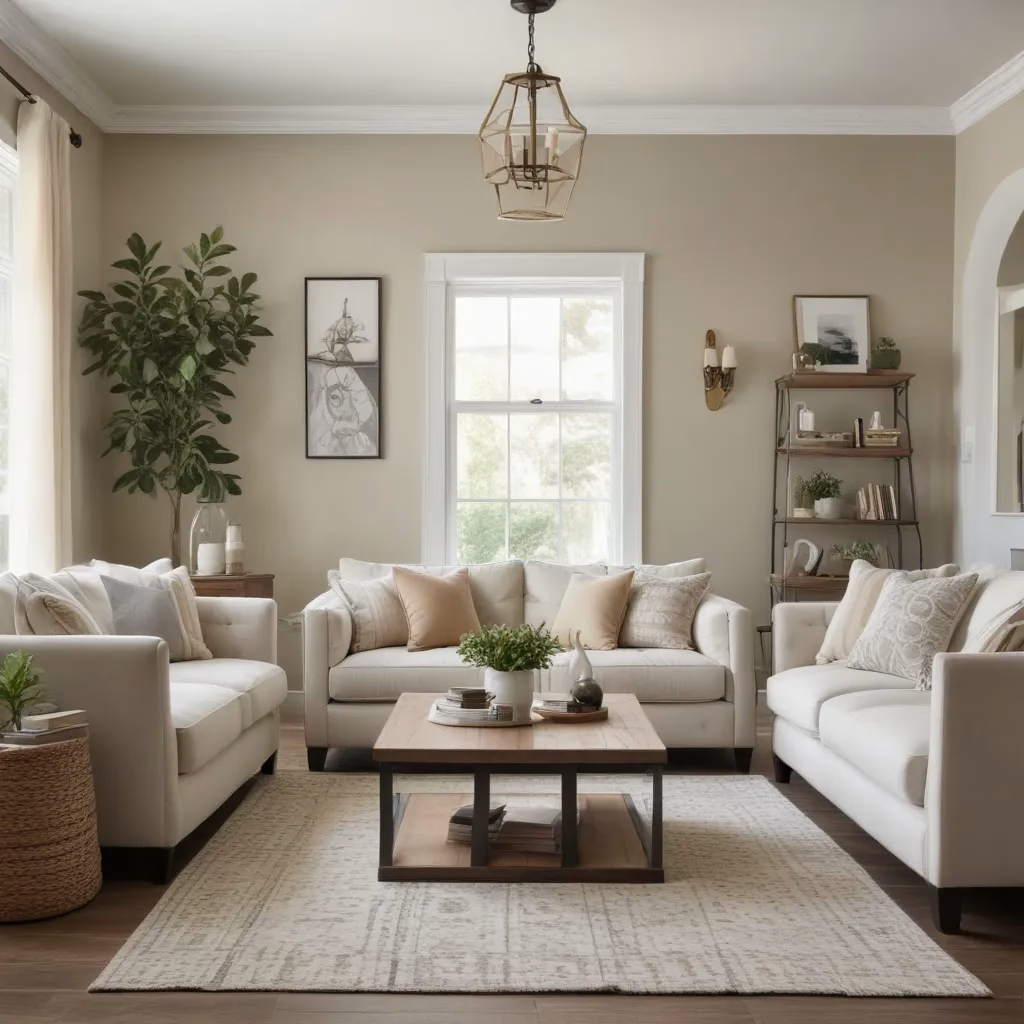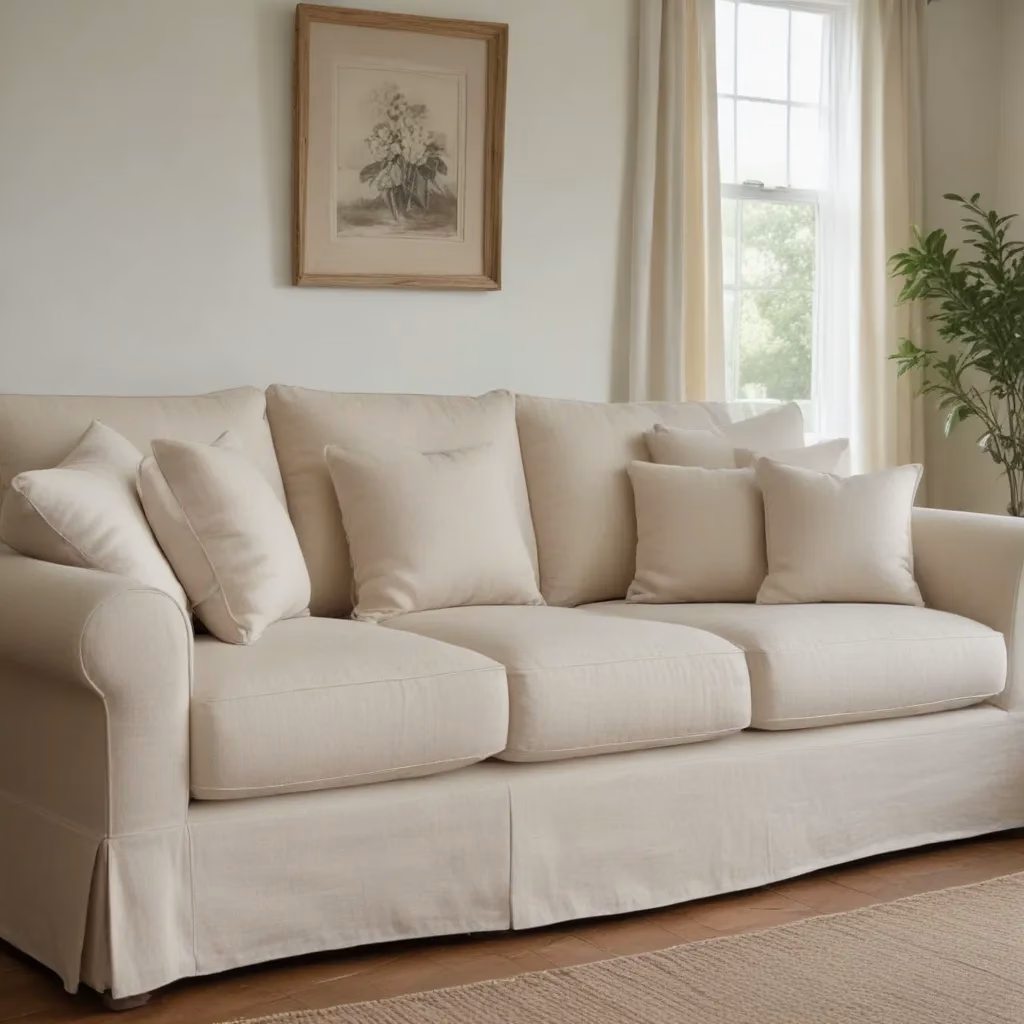
The Rise of Minimalism in Furniture
As a furniture specialist, I’ve witnessed countless trends come and go over the years. However, one design approach that has steadily gained traction is the use of linear profiles in sofa design. This trend towards clean lines and precise angles reflects a broader shift towards minimalism in home decor.
The appeal of linear profiles lies in their ability to create a sense of order and calm in a space. By stripping away unnecessary ornamentation, these designs allow the true form and function of a sofa to shine through. It’s a look that resonates with those who appreciate simplicity and efficiency in their living spaces.
What’s particularly interesting about this trend is how it manages to be both timeless and contemporary. The basic principles of linear design have roots in mid-century modern aesthetics, yet they feel fresh and relevant in today’s interiors. This duality makes linear sofas a smart investment for those looking to create a space that won’t feel dated in a few years’ time.
Understanding Linear Profiles in Sofa Design
When we talk about linear profiles in sofa design, we’re referring to furniture pieces that emphasize straight lines, right angles, and geometric shapes. These sofas often feature:
- Rectangular or square seat cushions
- Straight, clean-edged armrests
- Backs that are either perfectly vertical or at a slight angle
- Legs that are typically straight and often made of metal or wood
The overall effect is one of precision and intentionality. Every element of the sofa appears to have been carefully considered and placed with purpose. This approach to design aligns well with the principles of minimalism, where the mantra “less is more” reigns supreme.
It’s worth noting that linear doesn’t necessarily mean uncomfortable. Many of these sofas incorporate high-quality foam and supportive springs to ensure that comfort isn’t sacrificed for style. The key is finding a balance between the clean aesthetic and practical comfort needs.
The Impact of Materials on Linear Design
The choice of materials plays a crucial role in the success of linear sofa designs. Fabrics with a smooth finish tend to work best, as they emphasize the clean lines and don’t distract from the overall form. Leather is a popular choice for this reason, offering a sleek look that ages beautifully over time.
For upholstery, tightly woven fabrics in solid colors or subtle patterns complement the minimalist aesthetic. Textiles with a bit of sheen can add an extra dimension to the design, catching the light in interesting ways without overwhelming the simplicity of the form.
When it comes to the frame and legs, materials like brushed steel, chrome, or powder-coated metal are common choices. These materials not only provide sturdy support but also contribute to the modern look of the sofa. Wood can also be used effectively, particularly when it’s given a simple, streamlined shape that echoes the overall design of the piece.
Color Palettes for Linear Sofas
The color choices for linear sofas often lean towards neutrals and monochromatic schemes. This isn’t to say that bold colors are off-limits, but they’re typically used with more restraint in minimalist designs. Some popular color options include:
| Neutral Tones | Bold Accents | Earthy Hues |
|---|---|---|
| Crisp White | Charcoal Gray | Warm Taupe |
| Soft Beige | Navy Blue | Sage Green |
| Light Gray | Deep Red | Terracotta |
When selecting a color for a linear sofa, it’s important to consider how it will interact with the rest of the room. A neutral-toned sofa can serve as a versatile foundation, allowing for more experimentation with accent pieces and wall colors. Conversely, a sofa in a bold hue can become a striking focal point in an otherwise subdued space.
Integrating Linear Sofas into Different Interior Styles
One of the strengths of linear sofa designs is their versatility. While they’re often associated with modern and contemporary interiors, they can be successfully incorporated into a variety of design styles. Here’s how:
In a modern setting, a linear sofa can be the centerpiece of a room. Pair it with other geometric furniture pieces and abstract art for a cohesive look. The clean lines of the sofa will complement the overall aesthetic perfectly.
For a more eclectic space, a linear sofa can provide a grounding element amidst a mix of styles and periods. Its simplicity allows it to act as a neutral backdrop for more ornate or colorful pieces without clashing.
Even in traditional interiors, a well-chosen linear sofa can add a touch of contemporary flair. The key is to balance it with softer elements like plush throw pillows or a richly patterned area rug to prevent the space from feeling too stark.
When incorporating a linear sofa into any style of room, consider the following tips:
- Use textiles to soften the look if needed
- Balance the straight lines with curved accent pieces
- Pay attention to scale to ensure the sofa doesn’t overpower the space
- Use lighting to highlight the sofa’s clean lines and create visual interest
The Practicality of Linear Sofa Designs
Beyond their aesthetic appeal, linear sofas offer several practical advantages. Their simple shapes often translate to easier maintenance and cleaning. Without deep crevices or ornate details, these sofas are less likely to trap dust and debris.
Additionally, the straightforward design of linear sofas can make them more adaptable to different room layouts. They tend to fit well against walls or can float in a space without looking out of place. This flexibility is particularly valuable in smaller homes or apartments where furniture needs to serve multiple purposes.
From a longevity perspective, the timeless nature of linear designs means they’re less likely to look dated as trends change. This makes them a smart investment for those who prefer to update their decor infrequently.
Customization Options for Linear Sofas
While linear sofas are defined by their clean lines and minimalist approach, there’s still plenty of room for customization. Many furniture makers offer options to tailor these pieces to individual tastes and needs. Some common customization choices include:
- Fabric selection: From luxurious velvets to durable performance fabrics
- Leg finishes: Options like brass, black metal, or various wood tones
- Cushion fill: Choices ranging from firm supportive foam to plush down-alternative
- Size variations: Modular options to fit different space requirements
When considering customization, it’s important to keep the overall design principles in mind. The goal is to enhance the sofa’s linear qualities rather than detract from them. For example, choosing a fabric with a subtle texture can add depth without compromising the clean aesthetic.
Maintenance and Care for Linear Sofas
To keep a linear sofa looking its best, regular maintenance is key. The good news is that their simple designs often make this task easier compared to more ornate furniture. Here are some care tips:
- Vacuum regularly to prevent dust buildup
- Rotate cushions (if possible) to ensure even wear
- Address spills immediately to prevent staining
- Use fabric protectors for added durability
- Follow manufacturer guidelines for cleaning specific materials
For leather linear sofas, conditioning the material every 6-12 months can help maintain its appearance and prevent cracking. With fabric upholstery, occasional professional cleaning can keep the sofa looking fresh and extend its lifespan.
The Future of Linear Sofa Design
As we look to the future, it’s clear that linear sofa designs will continue to evolve. We’re seeing interesting developments in materials, with a growing focus on sustainable and eco-friendly options. Recycled fabrics and responsibly sourced wood are becoming more prevalent in high-end furniture design.
Technology is also playing a role in the evolution of linear sofas. Some manufacturers are experimenting with smart features like built-in charging ports or adjustable components that can be controlled via smartphone apps. These innovations are being integrated in ways that maintain the clean aesthetic of linear designs.
Another trend to watch is the increasing demand for multifunctional furniture. Linear sofas that incorporate storage solutions or convert into beds are likely to become more popular, especially in urban environments where space is at a premium.
Choosing the Right Linear Sofa for Your Space
When selecting a linear sofa for your home, there are several factors to consider:
- Room size and layout
- Existing decor and color scheme
- Lifestyle needs (e.g., durability for families with children or pets)
- Budget constraints
- Personal comfort preferences
It’s always a good idea to measure your space carefully before making a purchase. Consider not just the dimensions of the room, but also doorways and staircases that the sofa will need to pass through during delivery.
Don’t be afraid to request fabric swatches or visit showrooms to see and feel the sofas in person. What looks good in a catalog might not always translate to real life, so taking the time to experience the piece firsthand can save disappointment later.
The Role of Lighting in Showcasing Linear Sofas
Proper lighting can significantly enhance the impact of a linear sofa in your space. The clean lines and precise angles of these designs create interesting shadows and highlights when illuminated correctly. Here are some lighting strategies to consider:
- Use directional spotlights to accentuate specific features of the sofa
- Incorporate soft, diffused lighting to create a cozy atmosphere around the seating area
- Experiment with backlighting to create a dramatic silhouette effect
- Place table lamps on either end of the sofa for balanced, functional lighting
Remember that the color temperature of your lighting can affect how the sofa’s upholstery appears. Warm lighting tends to create a cozier feel, while cooler tones can emphasize the modern aspects of the design.
Accessories and Accents for Linear Sofas
While the beauty of linear sofas lies in their simplicity, the right accessories can enhance their appeal without compromising the minimalist aesthetic. Here are some ideas:
- Throw pillows in geometric patterns or solid colors that complement the sofa
- A sleek throw blanket draped over one corner
- A minimalist coffee table that echoes the sofa’s clean lines
- Abstract art pieces on nearby walls
- A sculptural floor lamp that adds visual interest without clutter
When selecting accessories, aim for quality over quantity. A few well-chosen pieces will have more impact than numerous small items that can create visual noise.
The Psychology of Linear Design in Living Spaces
There’s an interesting psychological aspect to incorporating linear designs into our living spaces. The clean lines and uncluttered appearance of these sofas can have a calming effect on the mind. In a world that often feels chaotic, coming home to a space defined by order and simplicity can be deeply refreshing.
Moreover, the versatility of linear sofas allows for easy updates to a room’s look without replacing the main furniture piece. This adaptability can be empowering for homeowners, giving them the freedom to express their changing tastes over time without major investments.
Comparing Linear Sofas to Other Design Styles
To truly appreciate the unique qualities of linear sofas, it’s helpful to compare them to other popular design styles. Here’s a quick comparison:
| Feature | Linear Sofa | Traditional Sofa | Mid-Century Modern Sofa |
|---|---|---|---|
| Lines | Straight, precise | Curved, ornate | Mix of straight and organic |
| Comfort | Firm, supportive | Plush, sink-in | Moderate, balanced |
| Versatility | High | Moderate | High |
| Maintenance | Generally easy | Can be complex | Moderate |
| Timelessness | High | Varies | High |
This comparison highlights how linear sofas stand out in terms of their clean aesthetic and ease of maintenance. While they may not offer the same sink-in comfort as some traditional designs, they make up for it with their versatility and timeless appeal.
Conclusion: The Enduring Appeal of Linear Sofa Design
As we’ve explored throughout this article, linear sofas offer a unique combination of style, functionality, and adaptability. Their clean lines and precise angles bring a sense of order and calm to living spaces, while their versatility allows them to complement a wide range of interior design styles.
Whether you’re furnishing a modern apartment, updating a traditional home, or creating an eclectic living space, a well-chosen linear sofa can serve as a foundation piece that ties the room together. By understanding the principles behind linear design and considering factors like materials, colors, and accessories, you can select a sofa that not only looks great but also enhances your daily living experience.
Remember, the key to success with linear sofa design lies in balancing simplicity with personal touches. Don’t be afraid to experiment with different fabrics, colors, and accessories to make the piece your own. And if you’re looking for expert guidance or a wide selection of linear sofas to choose from, consider visiting Sofa Spectacular for inspiration and options.
Ultimately, the enduring appeal of linear sofas lies in their ability to create spaces that are both aesthetically pleasing and functionally efficient. As we continue to seek balance in our fast-paced lives, these designs offer a welcome respite – a visual representation of the calm and order we often crave in our homes.



